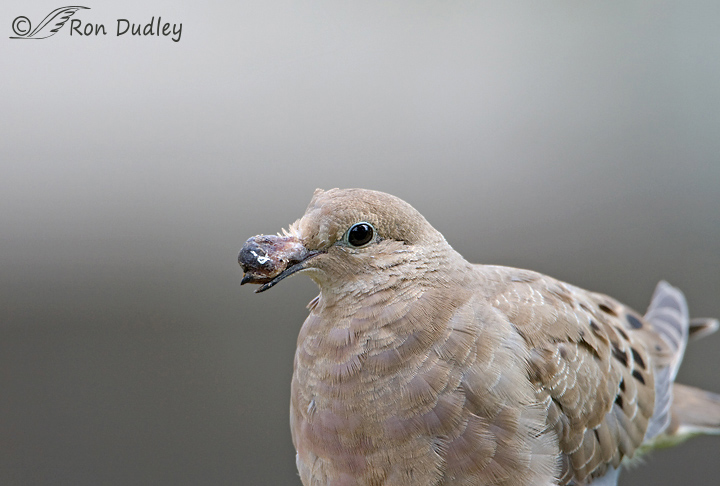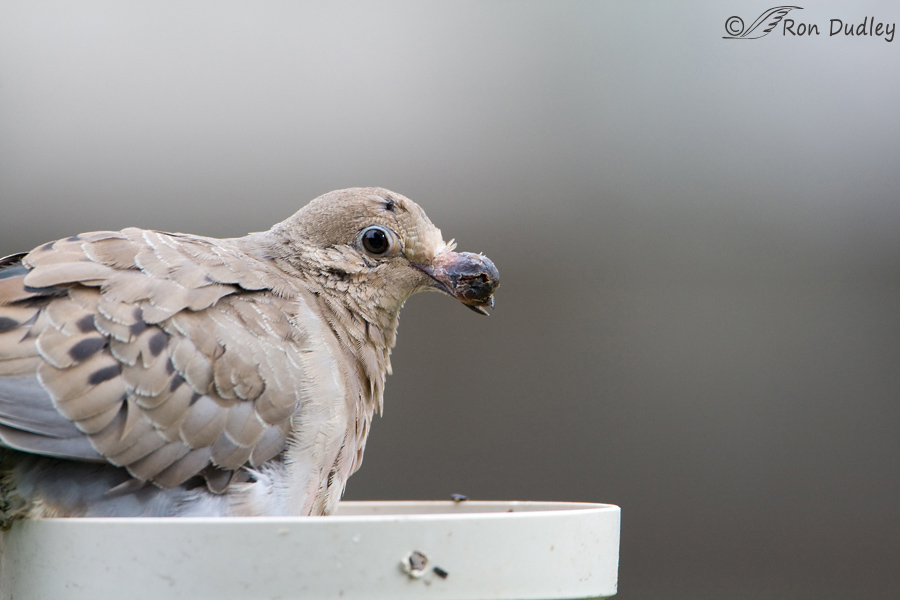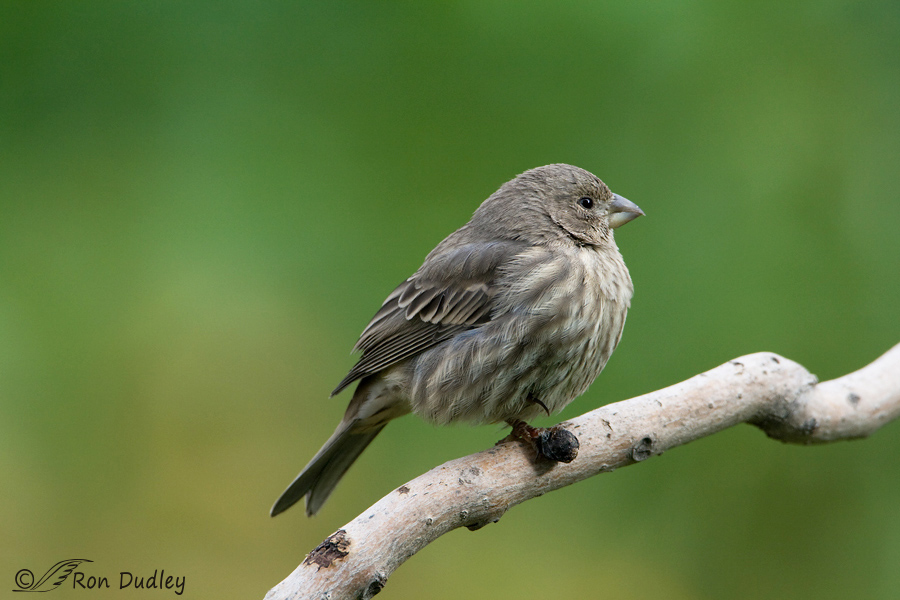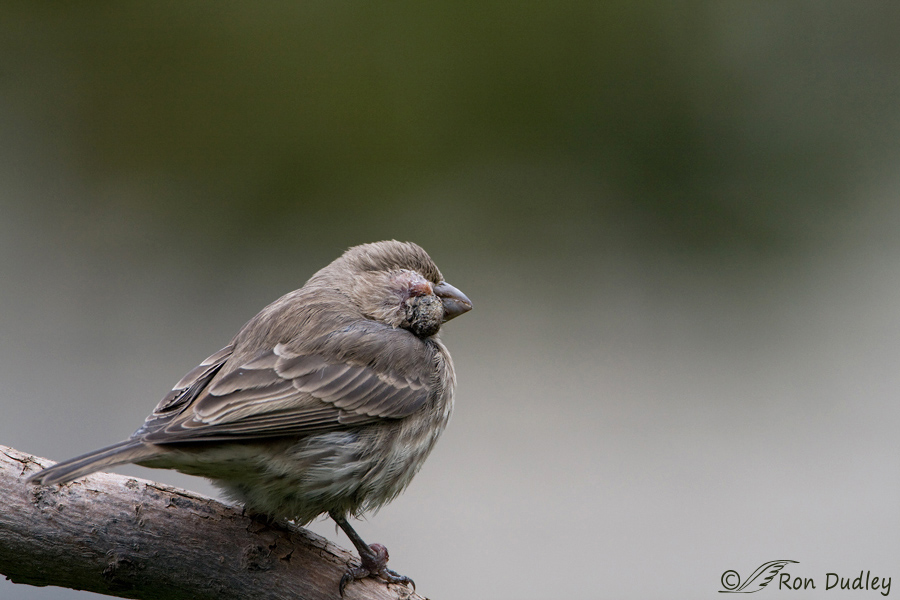- Because we love them many of us feed birds at backyard feeders this time of year to help them get through the harsh winter. So I thought this was a good time to recycle an old post from February of 2012 as a timely reminder to keep our feeders clean. These images reek of amateurism (poor composition and processing) because they were taken way back when I barely knew which end of my lens to point at a bird but I still think they graphically illustrate one of the problems we inadvertently cause for the birds we’re trying to nurture. I’ve revised some of the text and formatting.
Several years ago when I was new to bird photography I would often practice photographing birds that would come to my back yard feeder in order to improve my skills. Later that year I began to notice birds with deformities, especially on or near their bills, eyes, legs and feet. At first I thought they were some kind of tumors but on the morning I took these shots I saw three birds (two House Finches and one Mourning Dove) that were affected so I became alarmed and took the photos to the Vertebrate Disease Specialist at Division of Wildlife Resources here in Salt Lake City.
The diagnosis was avian pox (avipoxvirus).

Avian pox is a serious disease of many species of birds caused by several strains of avipoxvirus. The most common form, cutaneous pox, causes wart-like growths around eyes, beak, legs or any unfeathered skin. Those warts may interfere with feeding, sight, breathing or perching. Affected birds often become emaciated due to the inability to feed. Avian pox causes significant mortality in infected birds but they can recover as long as they’re able to feed. There is no evidence that avipoxvirus affects humans.

Birds become infected with the virus through direct physical contact with infected birds, ingestion of food or water contaminated by other infected birds or through contact with contaminated surfaces – especially at bird feeders and nearby perches. The virus enters through skin surfaces that have become abraded (which is why only unfeathered skin gets the lesions). Mosquitoes also act as vectors of the virus.

The avian pox on this finch’s foot comes from warts on only a single toe. The bird’s behavior didn’t seem to be affected by the warts and it foraged normally. You can see that it chose to rest standing on the infected foot with the other one drawn up to its belly.

The warts on the eye of this finch completely blinded it on that side but it was simply amazing how well it compensated for the affliction. It flew and even landed normally but it was obvious that it was blind on the right side because I could walk right up to it until it turned its head and noticed me. The bird also has an infected right foot.
I photographed all three of these birds within a 15 minute span so I knew there was a serious problem in my neighborhood and after my visit to the Vertebrate Disease Specialist and some further research I realized that bird feeders in my neighborhood (there were many of them, including mine) likely contributed to this disease outbreak. In order to prevent the spread of this disease experts recommend keeping feeders clean and regularly washed with a 10% bleach solution.
It’s my gut feeling that backyard feeders have a more positive effect on bird populations (by far) than any negative consequences caused by the occasional spread of disease that may be enabled by close contact with lots of birds at feeders. That said, preparing this post has reminded me once again just how very important it is to keep our feeders clean.
Ron
Note: As of 6:23 AM Mountain Time WordPress still hasn’t sent out the email with the link to this post to subscribers (I posted over an hour ago). Sometimes this happens and I don’t know why…


Oh poor things. I sent a note to my vet friend (avian experienced) to see what she might know about this. I hate to see this because it hurts my heart. I know education is best though! I’m glad you posted it.
Thanks for the reminder and I hear that cleaning feeders with bleach solution prevents other diseases as well, including salmonella, trichomoniasis,and aspergillosis-definitely worth the effort.
Back in the years when I had bird feeders, I fortunately never saw this problem. I would make a significant effort, though, to keep any future feeders very clean. Seeing diseases like this is disturbing, especially when they are something we can help to prevent, at least in part.
I have two feeders in the backyard – they are wood with a plexiglass wall, holding the seeds in – from ACE hardware – I haven’t seen birds with this affliction however perhaps I should get a metal and glass feeder?
I don’t know, Nicole. I’ve never seen any info suggesting one type of feeder over another to prevent this affliction. But it does seem logical that metal and glass might disinfect more thoroughly and easily than wood.
Thank you.
A message that we need to remember.
My wife and I attempted to raise an orphan Scrub Jay out in Los Angeles, in a cage on our back porch. It developed a bald pate, absence of any covering of its skull. Otherwise the patient grew and fledged, but when it was released, the rest of its local population ganged up on it within minutes. Some sort of genetic sorting?
I don’t know, George. Strange…
Thank you for a very important message, Ron. I’ll pass on a link to this post to people I know who have feeders.
Oh, and don’t worry about the WP notification — we’ll always come find you!
Thanks, Marty. However, not getting the link means a lot of folks apparently think I haven’t posted and they don’t go looking. Too bad – this is one I wanted everybody to see.
Horrible images, but important ones…
Agreed, Patty. I don’t like to make “downer” posts but sometimes it’s necessary.
Thanks, Ron.
I have seen this from time to time at our feeders and was curious as to what it was. I’ll pay closer attention to the hygiene of our feeders, as I don’t want to be party to the spread of the virus.
Good strategy, Neil.